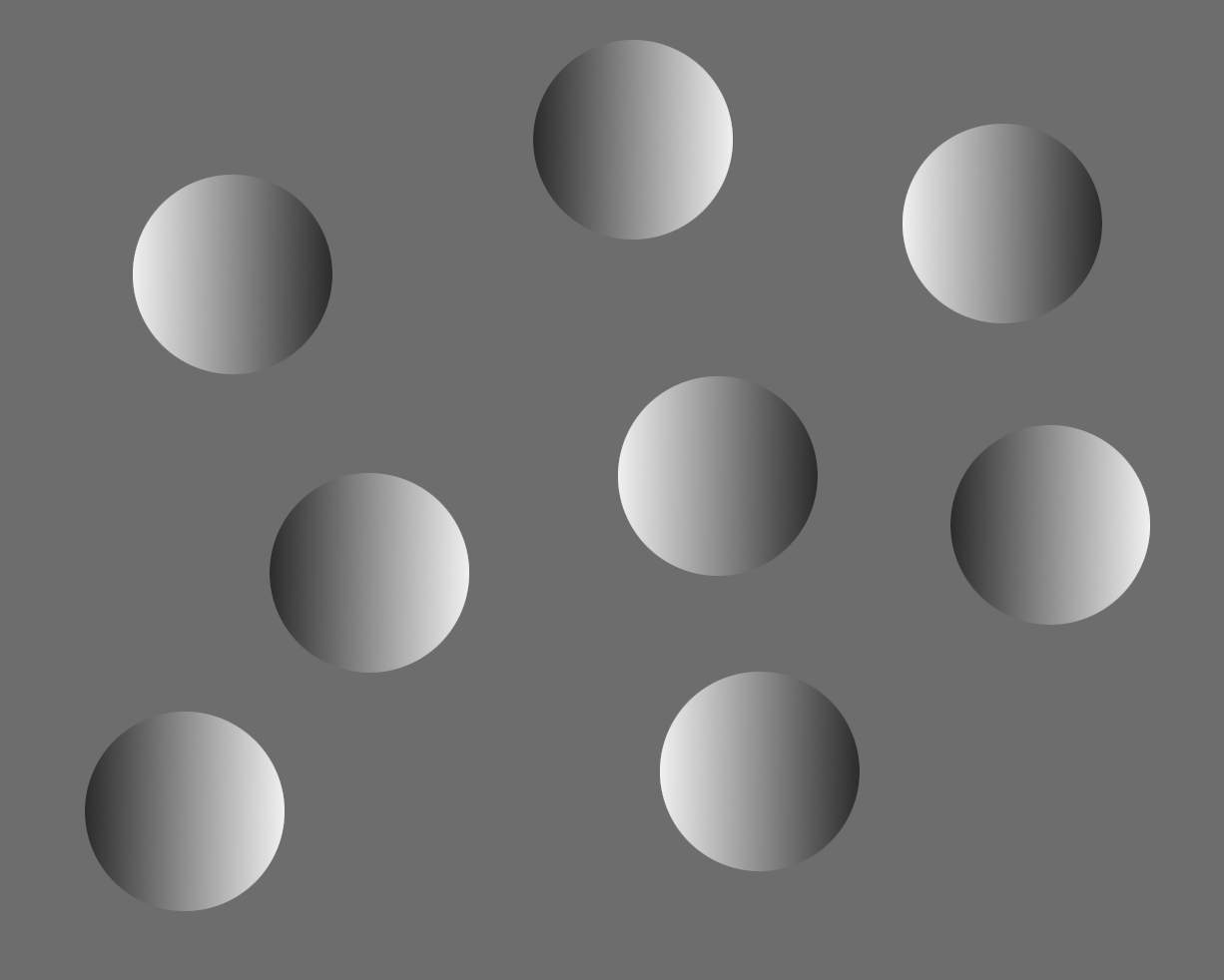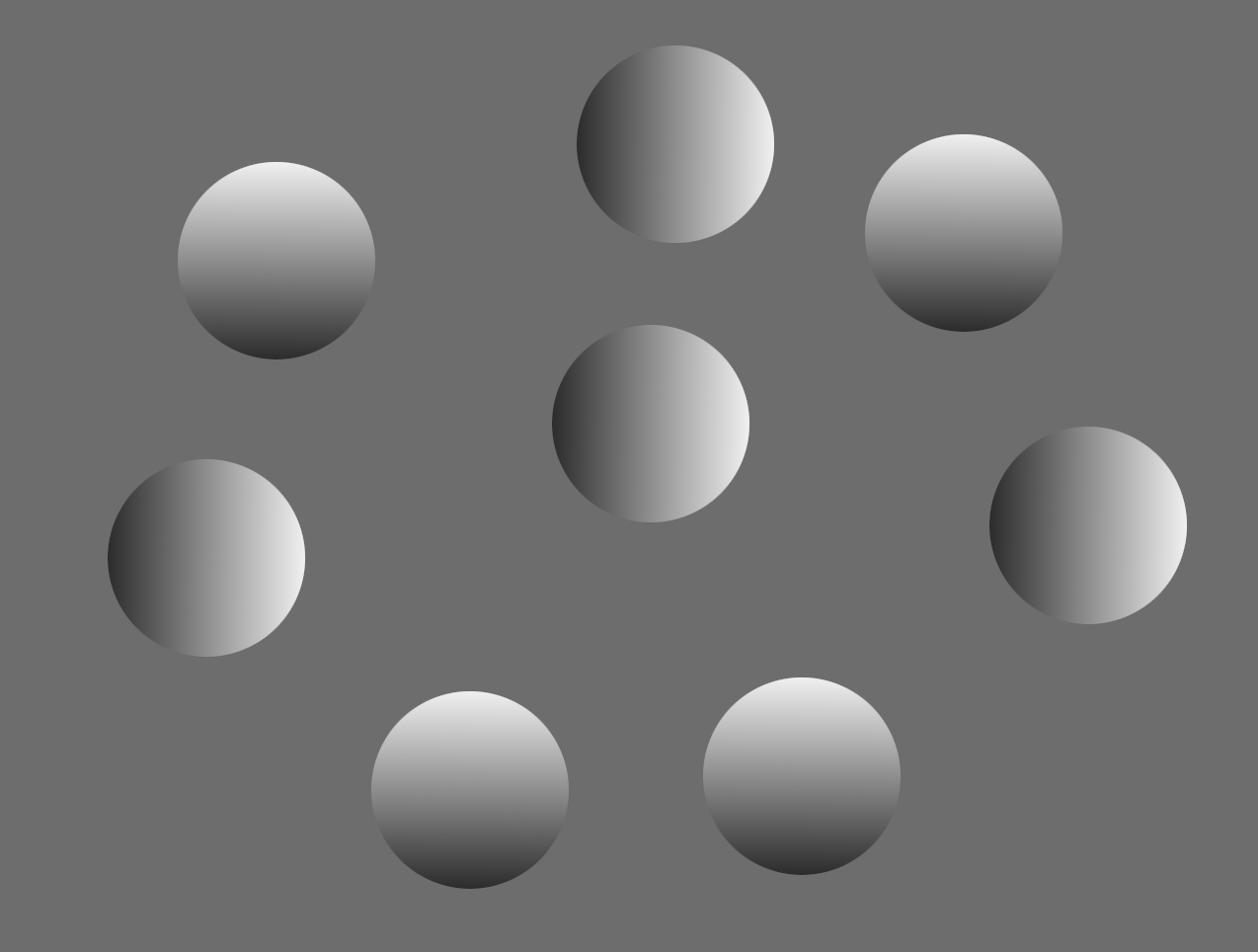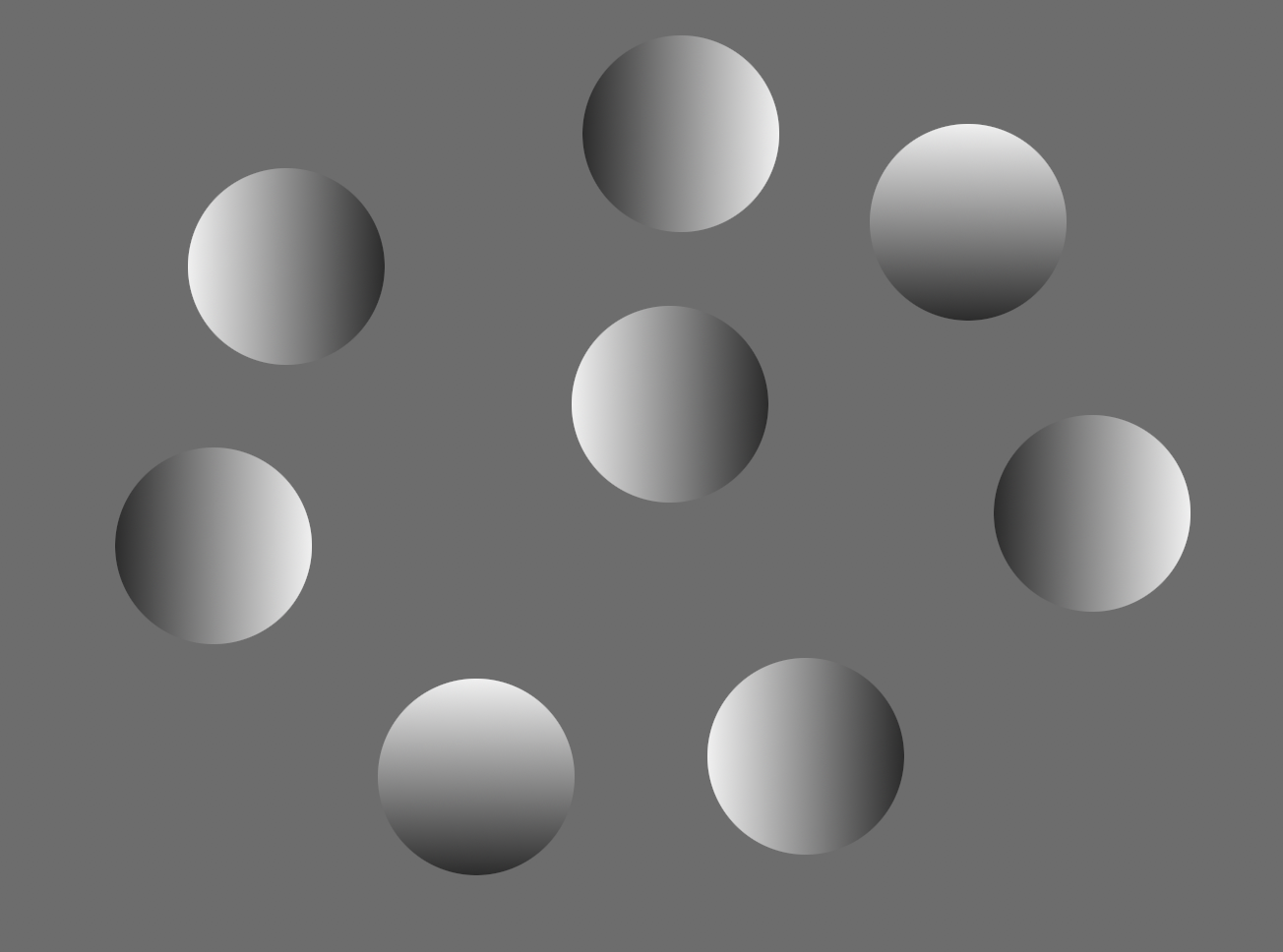9.35 Illusion Laboratory
Spring 2020 Vision Lab
How does the presence of variously oriented gradients affect the perception of depth?
Shape can be perceived purely from intensity differences. This is called shape from shading. This illusion is designed to test how this shape perception is affected by differently orientated gratings which are not consistent with a single light source. The first image is a control. The circles top-lit circles are generally perceived as popping out of the screen, and the bottom-lit circles are generally perceived as divots into the screen. For each of the images below, please answer the following questions: (a) Do you perceive depth? If so, is the effect stronger or weaker than the control image (the first image)? (b) Is depth perceived for every circle or only certain orientations? If only certain orientations, which ones? (c) If depth is perceived, how many look circles like they go into the screen and how many look like they are coming out of the screen? (d) Are any of the images bistable? Bistable means that the perceived depth changes or oscillates between multiple interpretations.






Ramachandran, V. S. (1988). Perception of shape from shading. American Journal of Ophthalmology, 105(4), 446. doi:10.1016/0002-9394(88)90349-2
Comments
CC BY-NC. | Design by TEMPLATED.
